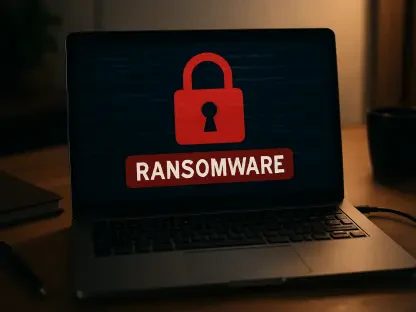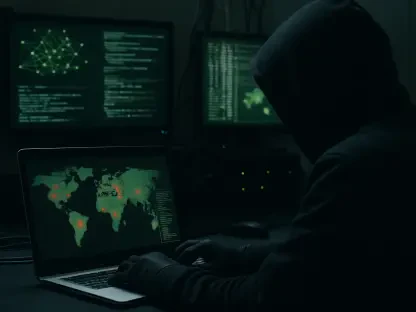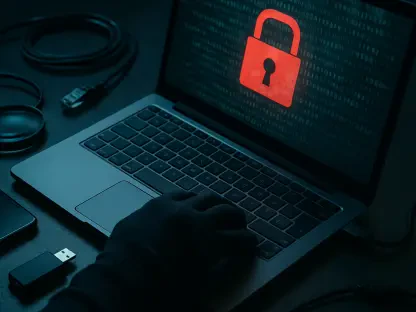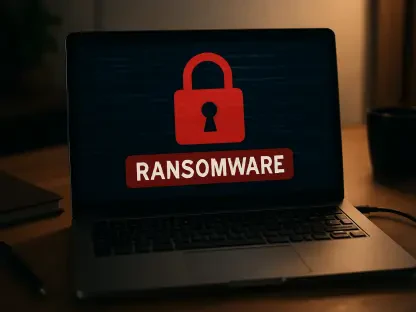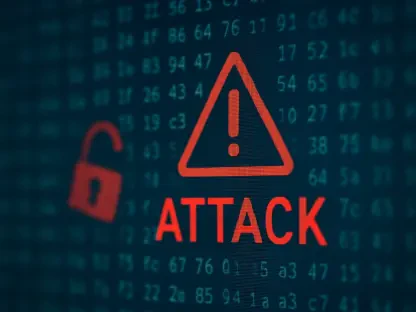The shift to remote work has fundamentally transformed the cybersecurity landscape, presenting new challenges and vulnerabilities for organizations. As cyber threats become increasingly sophisticated, businesses must adopt agile and comprehensive security measures to protect their data, systems, and employees. This article explores the evolving threat landscape and the strategies organizations can implement to secure remote work environments effectively.
The Rising Complexity of Cyber-Attacks
Advanced Strategies and Tools Used by Hackers
Cyber-attacks have grown in complexity, with hackers employing advanced strategies, tools, and technologies to enhance their success rates. These sophisticated attacks can bypass traditional security measures, making it imperative for organizations to stay ahead of the curve. Recent research by Xalient highlights that 99% of surveyed organizations experienced a cyber-attack in the past year, underscoring the urgency of addressing these threats. The increasing efficiency and precision of these attacks necessitate a shift in how businesses approach cybersecurity.
Hackers now leverage a range of advanced tools, such as artificial intelligence and machine learning, to automate and improve their attack methods. This evolution has resulted in more targeted and persistent threats, capable of evading even the most robust defenses. To combat this, organizations must continuously update their security protocols and invest in technologies that can anticipate and neutralize these advanced threats. Proactive measures, such as threat intelligence and real-time monitoring, are crucial in detecting and mitigating potential attacks before they cause significant damage.
Increased C-suite Attention and Strategic Importance
Cybersecurity has become a top priority in the boardroom, with 58% of CEOs recognizing cyber-attacks as a significant threat to business operations, according to PwC’s 25th CEO Survey. Security teams are under increased scrutiny as they work to safeguard the organization’s data, systems, and employees from evolving threats. This heightened focus on cybersecurity emphasizes the need for robust and adaptive security measures. The strategic importance of cybersecurity is now widely acknowledged, prompting investments in more sophisticated defense mechanisms and stronger collaboration between IT departments and executive leadership.
The rise in executive attention has led to the integration of cybersecurity into broader business strategies, ensuring that security considerations are factored into every aspect of operations. This alignment helps organizations create a cohesive security culture, where every employee understands their role in protecting sensitive information. Additionally, regular security briefings and updates keep the board informed about emerging threats and the measures being taken to address them. Such an approach not only enhances the organization’s ability to respond to incidents but also builds resilience against future attacks.
The Expanded Attack Surface Due to Remote Working
Challenges of Ubiquitous Access
The shift to remote work has expanded the attack surface, requiring organizations to evolve their cyber defenses to handle ubiquitous access from various locations. Unsecured Wi-Fi connections and unattended devices amplify vulnerabilities, making it challenging to enforce security policies effectively. Nearly half of the organizations surveyed by Xalient reported experiencing cyber-attacks related to remote or hybrid work setups. As employees access company networks from diverse locations, including home offices and public spaces, the potential entry points for attackers multiply.
Remote work environments often lack the stringent security measures found in traditional office settings, leading to increased risks. The use of personal devices, which may not be equipped with updated security software, further complicates the situation. To mitigate these vulnerabilities, organizations must implement comprehensive security solutions that offer protection regardless of location. Virtual private networks (VPNs), multi-factor authentication (MFA), and endpoint security tools can help secure remote access and reduce the likelihood of breaches. By prioritizing these measures, businesses can create a safer environment for their remote workforce.
Complications of Multi-device Usage
Modern employees often use multiple devices, including personal ones, to perform their duties, complicating the security landscape. Personal devices typically lack stringent security measures and protocols, increasing the risk of phishing attacks and unauthorized access to corporate networks. This multi-device usage necessitates comprehensive security solutions that can protect all endpoints. As the number of devices connected to corporate networks grows, so does the potential for security breaches. Organizations must adapt their security strategies to account for this new reality.
Implementing mobile device management (MDM) solutions can help organizations monitor and secure all devices accessing their networks. MDM tools enable IT teams to enforce security policies, manage updates, and remotely wipe data from compromised devices. Additionally, encouraging employees to follow best practices, such as regularly updating their devices and utilizing strong passwords, can enhance overall security. By addressing the unique challenges posed by multi-device usage, businesses can create a robust defense against cyber threats and safeguard their critical assets.
Secure Access Service Edge (SASE) as a Solution
Principles of Zero Trust
Secure Access Service Edge (SASE) is recommended as a robust solution for securing remote and hybrid environments. SASE follows zero trust principles, ensuring that all users and devices are authenticated and authorized before accessing the network. This approach minimizes insider threats and blocks malware, providing strong protection for business-critical SaaS applications. By adopting zero trust principles, organizations can create a security framework that continuously verifies the identity and trustworthiness of users and devices.
The zero trust model operates on the premise that no entity, whether inside or outside the network, should be trusted by default. Instead, access is granted based on a thorough assessment of risk and compliance with security policies. SASE integrates various security functions, such as secure web gateways, firewalls, and access controls, into a unified platform. This consolidation simplifies security management and provides consistent protection across all network edges. By embracing SASE, organizations can enhance their ability to detect and respond to threats in real-time.
Benefits of SASE Implementation
Organizations adopting SASE report significant benefits, including secure remote access for hybrid/remote work, updated threat protection, and improved security against breaches. Xalient’s research highlights that 28% of organizations adopted SASE for secure remote access, 28% for updated threat protection, and 27% for improved security against breaches. These benefits demonstrate the effectiveness of SASE in addressing modern cybersecurity challenges. The integration of various security functions into a single platform simplifies management and reduces the complexity of securing distributed environments.
SASE’s ability to provide consistent security across all network edges makes it particularly well-suited for remote and hybrid work setups. Its adaptive nature allows organizations to scale their security measures in response to changing threat landscapes. Moreover, SASE offers improved visibility into network traffic, enabling IT teams to identify potential threats and anomalies more effectively. By leveraging the comprehensive capabilities of SASE, businesses can create a robust defense against sophisticated cyber threats and ensure the continuity of their operations.
Adapting Security Protocols for Remote Work
Enforcing Security Policies Remotely
Enforcing security policies in a remote work environment presents unique challenges. Limited oversight and the use of unsecured networks make it difficult to ensure compliance with security protocols. Organizations must implement remote monitoring and management tools to maintain visibility and control over their distributed workforce. These tools enable IT teams to track user activity, detect potential security incidents, and enforce policies across all devices and locations.
Additionally, establishing clear guidelines and expectations for remote work can help employees understand their responsibilities in maintaining security. Regular audits and assessments can identify potential vulnerabilities and ensure that security measures are being followed. By leveraging technology and fostering a culture of accountability, organizations can overcome the challenges of enforcing security policies remotely and protect their critical assets.
Training and Awareness Programs
Employee training and awareness programs are crucial for mitigating cyber risks in remote work environments. Educating employees about the importance of cybersecurity, recognizing phishing attempts, and following best practices can significantly reduce the likelihood of successful attacks. Regular training sessions and updates on emerging threats can help maintain a security-conscious workforce. By empowering employees with knowledge, organizations can transform them into a strong line of defense against cyber threats.
Providing accessible resources, such as video tutorials and interactive modules, can make training more engaging and effective. Encouraging a proactive approach to cybersecurity, where employees feel comfortable reporting suspicious activity, fosters a collaborative security culture. Recognizing and rewarding individuals who demonstrate excellent security practices can also reinforce positive behavior. By prioritizing training and awareness, businesses can create a knowledgeable and vigilant workforce, capable of responding to evolving cyber threats.
The Future of Cybersecurity in Remote Work
Embracing Innovative Security Solutions
As cyber threats continue to evolve, organizations must embrace innovative security solutions to stay protected. The adoption of comprehensive security models like SASE is a step in the right direction, providing consistent security across distributed environments. By leveraging advanced technologies and strategies, businesses can safeguard their networks, data, and people against growing vulnerabilities. Embracing innovation is essential for staying ahead of cybercriminals and ensuring the integrity of critical operations.
Advancements in artificial intelligence and machine learning offer new possibilities for enhancing cybersecurity. These technologies can analyze vast amounts of data, identify patterns, and predict potential threats, enabling organizations to respond proactively. Additionally, integrating automation into security processes can streamline incident response and reduce the time it takes to mitigate risks. By staying at the forefront of technological innovation, businesses can build resilient security infrastructures capable of withstanding sophisticated cyber-attacks.
Continuous Improvement and Adaptation
The transition to remote work has significantly altered the cybersecurity landscape, creating new challenges and vulnerabilities for organizations. As cyber threats become more advanced and complex, it is imperative for businesses to adopt flexible and comprehensive security measures to safeguard their data, systems, and employees. This shift calls for a reevaluation of traditional cybersecurity strategies, with a focus on securing remote work environments.
Key challenges include increased reliance on personal devices, unsecured home networks, and a rise in phishing attacks targeting remote workers. Organizations must implement strong encryption, multi-factor authentication, and regular security training to mitigate these risks.
Additionally, companies should consider partnering with cybersecurity firms to monitor and respond to threats in real-time. By embracing these adaptive security measures, businesses can protect their operations and workforce from the evolving threat landscape. This article delves into these emerging threats and the strategies organizations can use to effectively secure their remote work setups.



